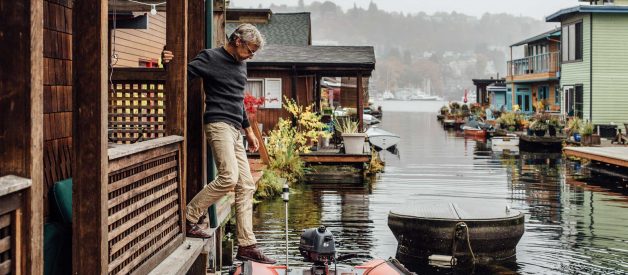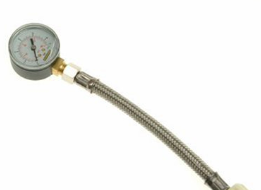Take a look inside three floating homes on a quiet lake in Seattle, where houseboat living is buoyed by plenty of perks?and a few challenges.
Photos by Rafael Soldi
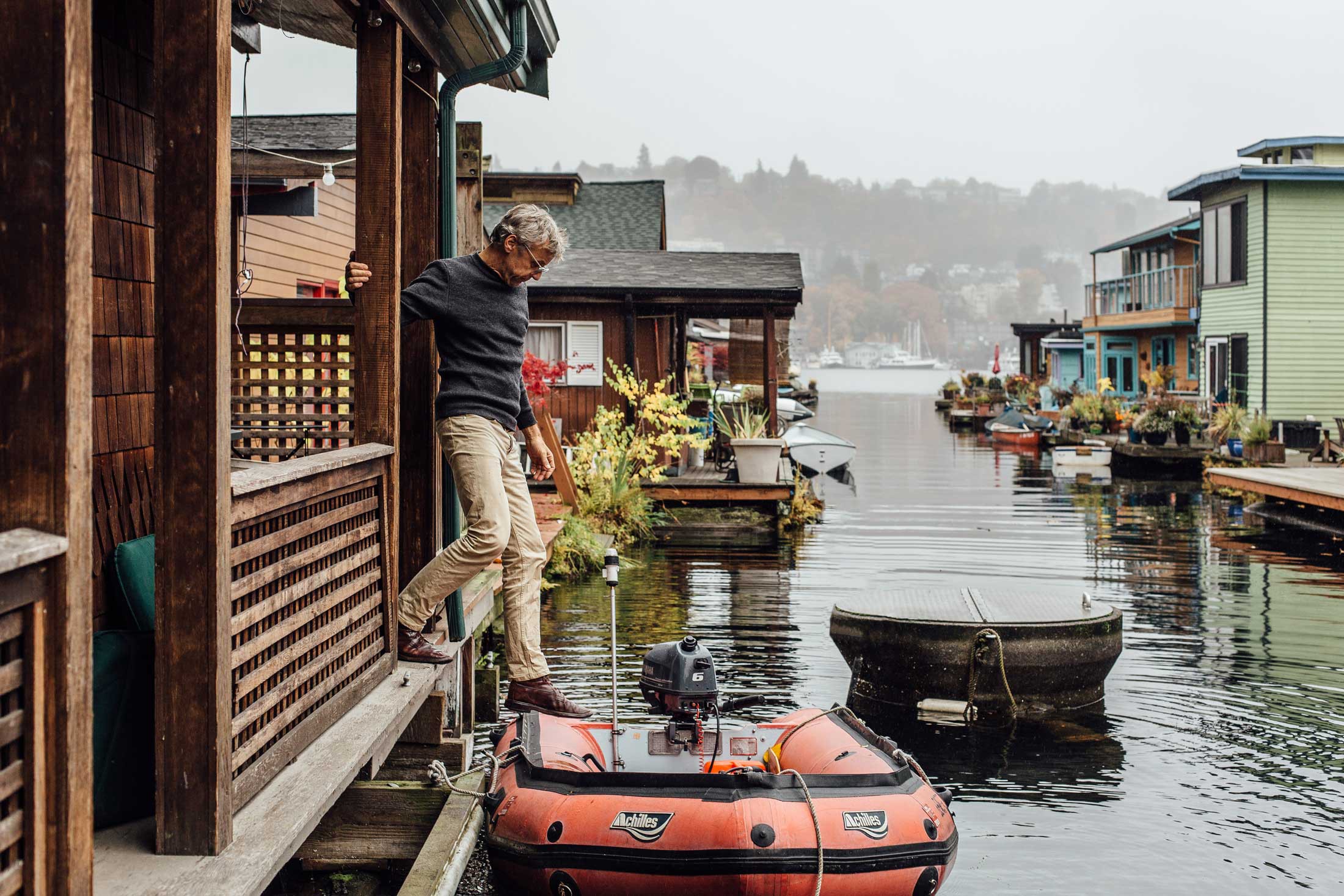 Seattle resident Philip has called this houseboat home for the past eight years.
Seattle resident Philip has called this houseboat home for the past eight years.
One warm, late-summer evening, I wrangle an invitation to a friend of a friend?s floating home. Everyone?s windows and split doors are open, inviting the breeze. As I walk down the dock, bits of conversation slip outside, the clink and clatter of dishes. And then there?s Pam?s little white dog perched in her kitchen window, wearing his life vest and barking the news of my arrival.
Pam pours me a drink and we settle into the couch on the back deck, just a few feet from the water. I?m here to ask her what it?s really like to live on one of Seattle?s storied houseboats. I can?t stop myself from commenting on the first-class potted plant game. Nearly every dock is lined with them: ceramic pots overflowing with vigorous trailing vines, flowers, and succulents.
 Potted plants and trees stand in for lawns along the community?s walkways.
Potted plants and trees stand in for lawns along the community?s walkways.
?Let me show you how I water them,? Pam says, eagerly, jumping up and grabbing a well-weathered five-foot branch with a lidless tea kettle nailed to one end. She dips the kettle end in the canal and pours the water over her plants with joyful abandon, letting the excess water slosh across the decking and back into the lake. It?s just as charming as it sounds.
Across the canal, a pile of inflatable floaties ? a doughnut, a swan, a twin-mattress-sized popsicle ? is stacked against another house . When the weather is warm enough, the neighbors float in this in-between waterway ? a space floating home residents think of as ?an extension of the living room,? or a communal backyard.
At the end of the dock a couple of kayaks glide by; a sailboat follows. I feel like I?m on vacation. Pam concurs, saying she has this feeling every day when she gets home. She often hops on her paddle board after dinner and wakes to the 8 a.m. departures of float planes buzzing overhead.
 Sailboats are docked by many of the lake?s houseboats.
Sailboats are docked by many of the lake?s houseboats.
?Would you sink my fantasies?? I ask her. ?Tell me the downsides of living here.?
?If you drop anything in the lake,? she says, ?you have to call a diver.? In big storms, the homes have been known to detach from the dock; her friend Philip once had to lasso his house and reel it back in. Sewer lines can come undone as the level of the lake rises and falls, so you?ve got to be careful what and how you flush. Every dock has a committee, like an HOA, which requires group decisions on just about everything. They?ve had raccoon problems, and invasions of otters (who regurgitate their food and stash it under the docks). And everybody knows everybody ? and all their business. When you live on a dock, it?s impossible not to.
I try to imagine it ? being at home on the water, having my whole life on display. I wonder how I?d feel if all my neighbors witnessed my son?s vociferous objections to going to school as he headed out the door this morning, or inadvertently eavesdropped on my phone calls, or passed judgment on my late-night shenanigans (would that there were any!). I think about all the things we shelter in our daily lives: our conversations and quirks, our passions and talents; about the difference between our outward appearances and our inner lives, between what we let people see and what we try to hide.
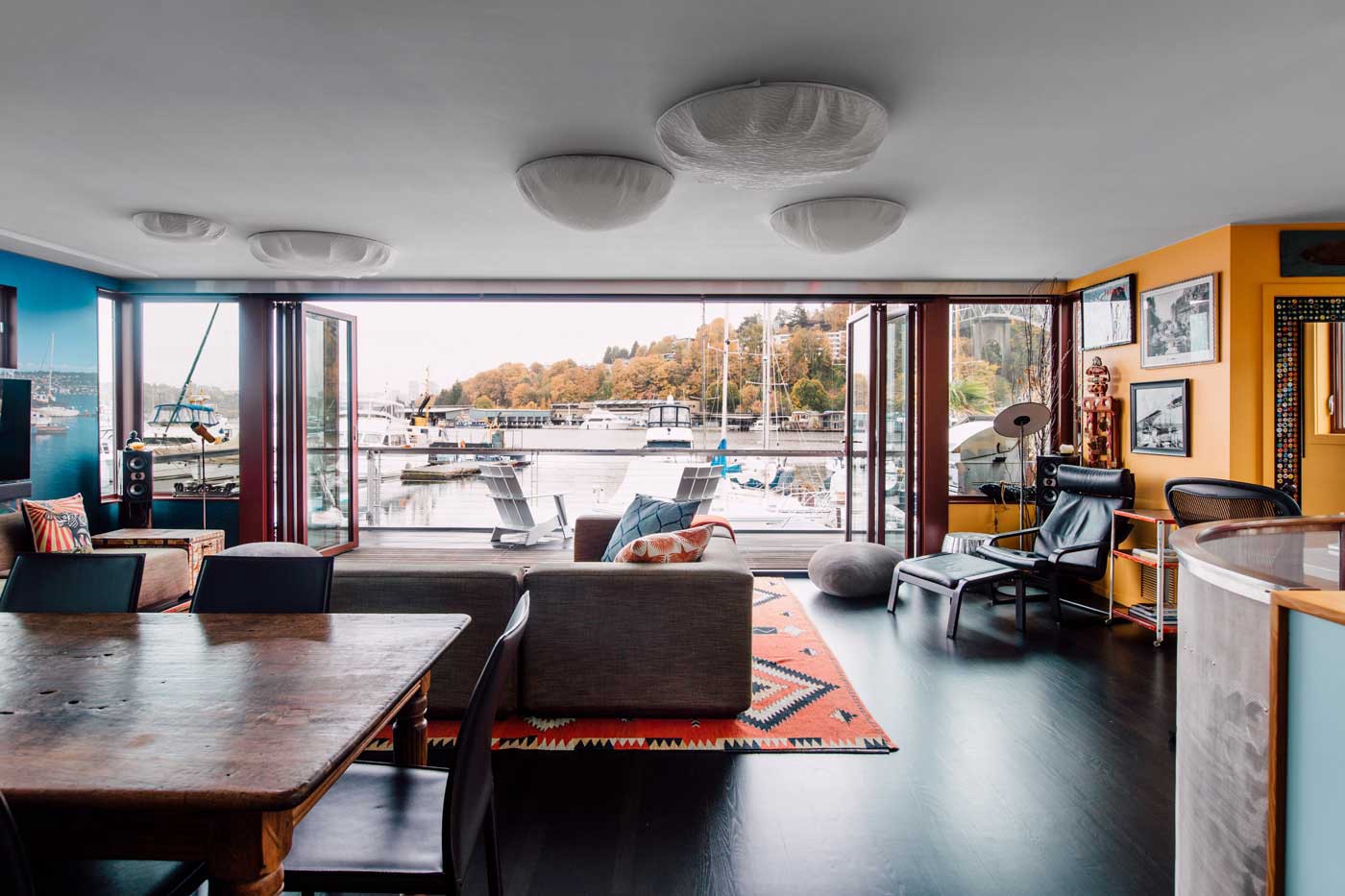 Gemma?s natural-light-filled living room overlooks the dock.
Gemma?s natural-light-filled living room overlooks the dock.
Gemma, a designer and community builder and mother of two, has lived afloat for twenty years, since she started dating her boyfriend and he was renting a floating home as a cool bachelor thing to do. After they married and had children, he thought they?d have to move; Gemma said they?d just make sure the kids wore life vests until they got to be good swimmers.
When you walk into Gemma?s home, a fireman?s pole reaches to the upper living level. Jellyfish-like light fixtures, colorful glass cabinet doors, map-of-the-world wallpaper, and floor-to-ceiling windows in the open-plan living room-kitchen make the inside feel of a piece with the watery world outside. They regularly see herons, eagles, salmon, kingfishers, otters, beavers, and geese right outside their doors, as well as their human neighbors on the dock who, after so many years, they consider extended family.
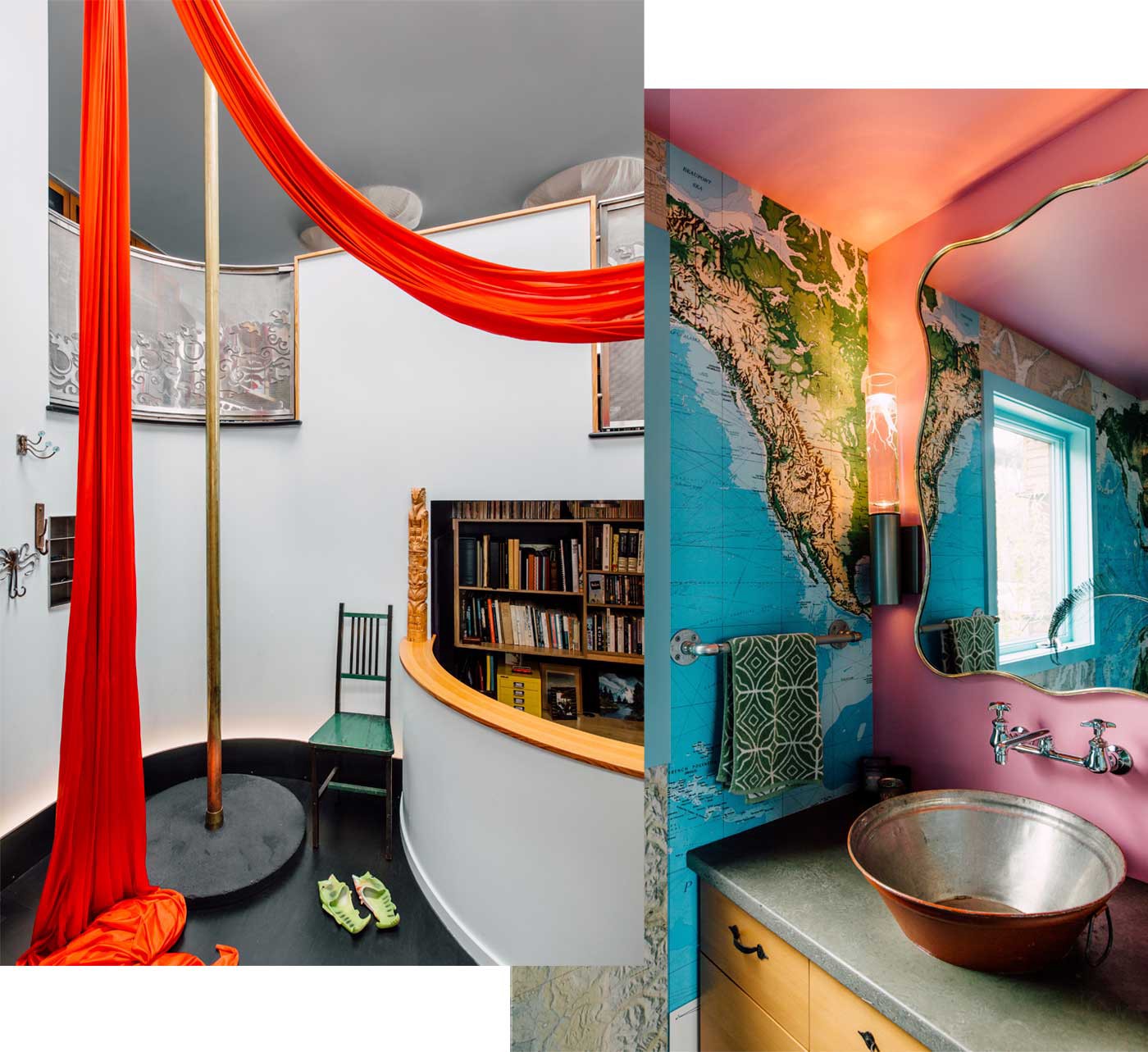 Left: A fireman?s pole connects the upper and lower levels in Gemma?s house. Right: A bathroom is decorated with wallpaper maps.
Left: A fireman?s pole connects the upper and lower levels in Gemma?s house. Right: A bathroom is decorated with wallpaper maps.
?Tell me it?s cold in the winter,? I plead. ?Tell me you?re seasick all the time.? But the worst she can give me is that the dock ramp gets icy and she?s had to quit wearing high heels.
Gemma?s newly renovated home sits on a base of concrete, so it?s warm all winter long. She grows tomatoes and blueberries on her roof deck. ?And,? she boasts, ?we get twice as much sun. It?s what Cambodians call ?water lightning? ? the reflection of the light on the ceiling. It?s constantly changing and always bright.? The house isn?t tippy at all, she swears; it only rocks if passing boats aren?t obeying the posted speed limit, ?or if we have 30 people over and they all go to one side of the house really quickly!?
Across the lake, Philip, a photographer, likens living on a houseboat to living with roommates. If he leaves his door open, three or four neighbors will wander in. They might ask what he?s cooking and then stay for dinner.
 Philip in his office, which is fronted by a small deck.
Philip in his office, which is fronted by a small deck.
Philip bought his floating home and the sailboat tied up to it eight years ago. A serious water-lover, he was tired of the landlubber life, of having a lawn. Now he rows year-round and swims every day in the summer, ?whether it?s just to wake up or for exercise.? The necessary downsizing didn?t phase him. ?I?m a huge fan of interiors and furniture and paintings,? he says, ?but I like the limits that [the floating home] imposes on you.?
At 60, Philip swears he?s happy that he can?t collect stuff, but in his first years afloat he quickly acquired a small fleet of boats. ?At one time I had five,? he admits. Now he has just one ? a little rubber boat with an outboard motor that he uses for grocery shopping and to go out to dinner. ?And sometimes,? he says with a sigh, ?I go on the lake with a bottle of wine and a pack of smokes just to escape.?
 Left: Philip relaxes in his living room. Right: A peek into Philip?s bedroom
Left: Philip relaxes in his living room. Right: A peek into Philip?s bedroom
?If you don?t like people, don?t move down here,? he warns, and then says he sometimes fantasizes about moving to a rural place where he can walk around naked and not be seen or heard by anyone. But in the same breath he says, ?It?s going to be hard to find a better setup? than this.
Unlike many floating home communities around the world, from Sausalito to Ontario, from Austin to the Netherlands, Seattle?s floating homes are at the core of the city. Built by seasonal mill workers in the late 19th century, they turned into Depression-era digs for bootleggers and criminals and, later, alternative housing for artists and hippies. Escapism, I gather, has always been part of the deal.
As dusk gathers, lights strung across the docks shine in the still water like stars, and the houseboats appear to go down, down into the depths, solid and ethereal at once. It?s a hard thing to quit ? this liberating, floaty feeling. I walk away watching the sky go to absolute gold beyond the Aurora Bridge, the water cutting out to the Pacific full of light and full of longing.
 Kayaks and canoes
Kayaks and canoes
You can get a taste of the life aquatic by renting a houseboat on Airbnb. More than 300 floating homes are available, from Copenhagen and London to Seattle and Key West, including some with wifi, full kitchens, heating, and, yes, even visits from otters, eagles, and herons.

About the author: Margot Kahn is the author of the biography Horses That Buck, which received the 2009 High Plains Book Award for First Book, was a finalist for the WWA Spur Award and was a New West Best Book of 2008. She is co-editor, along with Kelly McMasters, of the New York Times Book Review Editors? Choice anthology This Is the Place: Women Writing About Home, and their next collection, Wanting: Women Writing About Desire, is forthcoming from Catapult Books in 2021. Margot holds an MFA from Columbia University. An Ohio native, she lives in Seattle with her husband and son.
